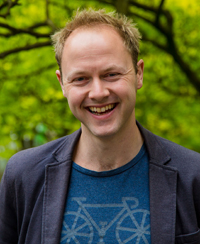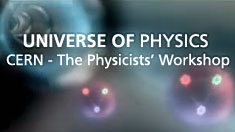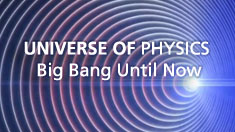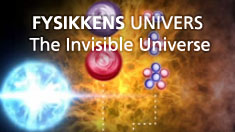Troels Petersen from the Niels Bohr Institute receives Science Dissemination Award
‘A star in the area of communication’ – this is how Troels Petersen is described by colleagues, media and anyone who has experienced him talk about what he is passionate about – physics. Troels Petersen is an associate professor of particle physics and works with the experiments at CERN, the international research centre in Geneva, Switzerland. Here they collide protons (nuclear particles) at incredibly high energies in order to smash them and using huge, sophisticated detectors, researchers can now study the tiniest elementary particles of matter and the physical forces. It is hardcore cutting edge research and difficult physics, but Troels Petersen always manages to explain the physics in such an engaged and understandable way, that everyone – even non-physicists, understand it. He has a unique talent for communication, for which he is now being awarded Science’s Dissimination Award.
“The motivation for me is professional pride. I think that physics plays a central role in our society and therefore it seems quite natural to me that it should be shared,” says Troels Petersen, bursting, as always, with enthusiasm.
And it is precisely this enthusiasm that makes his message shine through. His ‘career’ in communication actually started by accident. In 2008, while he was working at CERN, they were about to start collisions in the LHC accelerator. The Danish Broadcasting Corporation was down there to cover the events and Troels appeared in the segment, which was very good, in part because Troels was so good at explaining the events in an exciting and engaging way.

Troels Petersen has a unique talent for communication, for which he is now being awarded Science’s Dissimination Award.
Since then he has given numerous lectures both nationally and internationally and he has given a number of interviews on national radio and television. He has also starred in science programmes shown on DR, which can be seen on the Niels Bohr Institute’s website.
Awakens interest in science
With a new project to awaken an interest in science in schools, Troels Petersen has already held lectures for thousands of students in the Copenhagen region. He has now applied for funds from the A.P. Møller Foundation to take the project nationwide. He thinks this is important.
“When I was in school, most days were the same, but some days were different – this was when someone came from outside the school and talked about a subject. We were captivated by it and it is this experience that I would like to pass on,” he says.
Troels Petersen has a great love for science and he has a natural talent for communication. He also uses this in his teaching, where strives to give students aha-experiences.

Troels Petersen has given numerous lectures both nationally and internationally and he has given a number of interviews on national radio and television.
The art of storytelling is appreciated
He has even been involved in art. On the façade of the Niels Bohr Institute out towards Blegdamsvej you can see dots of light dancing across the wall. It appears random, but it is not entirely so. It is actually a light installation that represents a branch of the large ATLAS detector at CERN and the dots of light are the collisions that occur when protons collide at great energies and split up into billions of elementary particles that spread out and hit the detector. The light installation is called Colliderscope and was developed by the artists Christian Skeel and Morten Skriver in collaboration with the physicists Clive Ellegaard and Troels Petersen.
For his unique ability to convey knowledge about physics in an exciting and engaging way, he receives the Science Dissimination Award 2015.
“I am very honoured and happy for the recognition it is to receive the Science Dissimination Award – both because I really like to talk about physics and because I think the Niels Bohr Institute deserves a place in the public mind,” says Troels Petersen.
The award ceremony will take place on 22 January 2016 at a ceremony at the Niels Bohr Institute. The award will be presented by John Renner Hansen, the Dean of the Faculty of Science at the University of Copenhagen.

Troels Petersen, Associate Professor in experimental particle physics at the Niels Bohr Institute, Universitety of Copenhagen, +45 3532-5442, petersen@nbi.ku.dk





